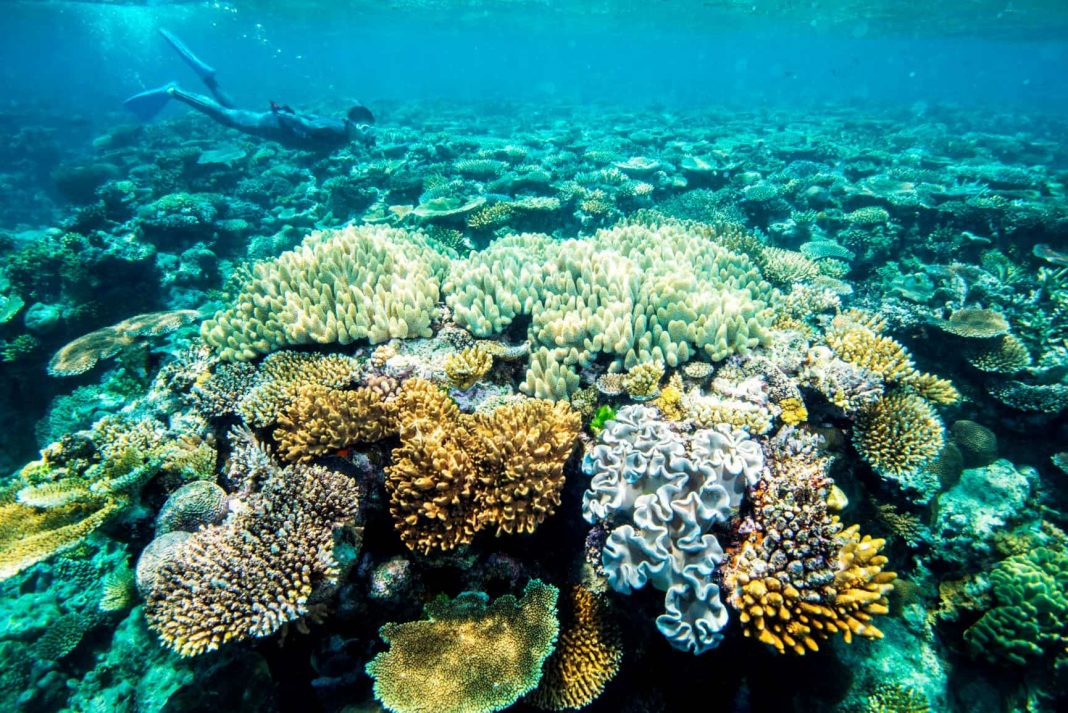The outlook for the Great Barrier Reef remains very poor despite improved coral cover after a “breather” year without cyclones and bleaching events, experts from the federal government’s marine science agency say.
The Australian Institute of Marine Science has shared the latest data from its long-term monitoring program showing large increases in hard coral cover along the length of the reef.
But the agency also warned the recovery “will be easily undone by the next severe tropical cyclone or widespread bleaching event”.
Observers surveyed 127 sites after a good year that did not see any direct hits by large cyclones. There were also no sustained heatwaves that cause mass bleaching.
All three zones of the reef stretching from Cape York south to Gladstone saw large increases, proving it is still capable of regeneration unlike some others elsewhere in the world.
But the new growth largely involved Acropora corals, which grow fast but are also the first to go when cyclones and coral bleaching hits. They’re also the favoured food of crown-of-thorns starfish.
“Any reef that has high numbers of these corals is particularly at risk in the event of any acute disturbances,” Mike Emslie, who leads the monitoring program, told reporters on Monday.
He said the new growth was undoubtedly good news but also warned there were limits to the reef’s resilience.
“The prognosis is for escalating pressures from climate change. And this means there will be less opportunity for recovery – less windows of opportunity and those windows will be shorter moving into the future.”
Research program director Britta Schaffelke said the increased coral cover did nothing to change the reef’s “very poor” future outlook, detailed in a Great Barrier Reef Marine Park Authority report from 2019.
The coral recovery report comes as UNESCO‘s World Heritage Committee prepares to meet this week to consider if the reef should be formally declared “in danger”.
AIMS chief executive Paul Hardisty said the monitoring report was always released in July, and there was no link with the UNESCO meeting.
He said the agency’s job was to provide objective science and it did not have an opinion about whether an “in danger” listing was warranted.
“We do not comment on the policy or the position of others,” he said.
When asked if climate change risks were being adequately managed, he said AIMS had been very clear: “We must reduce emissions if the Great Barrier Reef and, frankly, other reefs around the world are to continue to exist in the state in which we recognise them today.”
Coral cover on the reef was hit hard by a series of events from 2009, including three mass bleaching events, 17 cyclones, and a fourth wave of crown-of-thorns starfish outbreaks.
While conditions vary in the northern zone of the reef, from Cape York to Cooktown, region-wide hard coral cover has continued to increase to 27 per cent this year.
That is classed as moderate cover, up from the lowest recorded level of 13 per cent in 2017, due to the cumulative effects of severe cyclones in 2014 and 2015.
For the central zone, from Cooktown to Proserpine, hard coral cover has increased to 26 per cent, from its lowest point at 11 per cent in 2012, after Cyclone Yasi.
In the southern zone, from Proserpine to Gladstone, coral cover is now considered high at 39 per cent – up from a low of 12 per cent in 2011 after Cyclone Hamish.
AAP
Read more:



